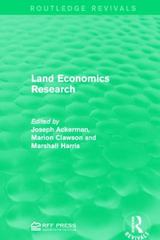Question
Please check if my answers are correct and please elaborate on them if possible - some needs working but i am not sure what working
Please check if my answers are correct and please elaborate on them if possible - some needs working but i am not sure what working is required
Reference:
Consumption expenditure = $180 b
Planned investment = $30 b
Government expenditure = $27 b
Export expenditure = $84 b
Import expenditure = $73 b
Autonomous taxes = $12 b
Income tax rate = 17%
Marginal propensity to save = 0.3
Marginal propensity to import = 0.1
Income equals 245b
Consumption expenditure is:-11.35b
total savings is 65b
value of imports is 48.5b
net exports is 35.5b
actual investment is 65b
unplanned investment is 35b
autonomous planned expenditure is 80.85b
equilibriu, incone is 248b
tax multiplier is -2.33
Question:Assume that the government decides to change autonomous taxes in order to achieve equilibrium income. Will it need to raise, lower or leave unchanged autonomous taxes to achieve this? If autonomous taxes do need to change by how much do they need to be raised or lowered for the economy to be in equilibrium. (equation stated, working out provided, value stated, direction of tax change stated)
Part (9)
Equilibrium level of income is $3b more than the actual level of income in the economy. Thus, government needs to increase the consumption expenditure by $3b to achieve equilibrium level of income. To achieve this level, the government will decrease taxes according to marginal propensity to consume. It can be shown as:
?Y=MPC.(?T)
3=0.7.(?T)
?T=-4.28b
Therefore, government should reduce taxes by $4.28b.
Question: What if instead of changing autonomous taxes the government decides to act directly to achieve a short run equilibrium? What would the government need to do precisely if it took a direct approach in its fiscal policy response. (Equation stated , working out provided, correct value stated, direction of change stated)
Part (10)
Government should use expansionary fiscal policies instead of tax cuts to achieve short-term equilibrium. The government could offer rebates for tax incentives to increase aggregate demand and boost economic growth. The reasoning behind this strategy is that they have more resources to spend or invest as people pay lower taxes, which fuel higher demands. The demand leads businesses to recruit more, lower unemployment and more intense labour competition. This, in turn, helps to increase salaries and generate more money for savings and investment for customers. In addition, if government wants to directly change the actual level of income to the equilibrium level of income, the government will have to increase expenditure by $3 billion.
Question: Compare the impacts of both scenarios from parts 9 and 10 on the balance of the government budget which prior to this had been in deficit by $10b. If you had to advise the government on adoptingoneof these approaches which one would you argue for. Explain why.In your answer consider factors aside from the impact on the budget that may be relevant to the macro economy. (change of balance shown under both scenarios, justification provided)
Part (11)
Since the economy is still facing a deficit in this situation, part 10) fiscal policy will be a better choice to achieve production equilibrium. Fiscal policy instruments include government expenditure and taxes. Therefore, use of expansionary fiscal policies help to close the negative gaps in production (downturns). Expansionary fiscal policies entail either increased government spending or reduced taxes. Fiscal policy refers to taking advantage of government spending and tax policies to control economic conditions. Since the increase in government expenditure will put the burden of $3 billion on the government and decrease in taxes will put another burden of $4.28b on the government, the government will increase its expenditure by $3 billion.
Question:Consider an economy with the following data
Natural level of output = $560 b
Actual level of output = $500 b.
explain the process by which self-correction takes places to restore the economy's natural level of output ( please help elaborate if possible )
Part (12b)
A recessionary gap can be closed through a self-correcting mechanism. The self-correcting mechanism involves a decline in the wage rate. With a decrease in wages, the cost of production declines. This causes an increase in the short-run aggregate supply. As a result, the SRAS curve shifts rightwards.
As shown in the figure above, a decline in wages leads to a rightward shift of the SRAS curve (from SRAS to SRAS'). As a result, the price levels falls (from P to P') and the output returns to the potentialatural level (Yf).

Step by Step Solution
There are 3 Steps involved in it
Step: 1

Get Instant Access to Expert-Tailored Solutions
See step-by-step solutions with expert insights and AI powered tools for academic success
Step: 2

Step: 3

Ace Your Homework with AI
Get the answers you need in no time with our AI-driven, step-by-step assistance
Get Started


